type
status
slug
summary
tags
category
icon
password
ID
date
Author
URL
Although the materials and practices of these dishes have little to do with China and their names have nothing to do with the Chinese celebrities involved, one thing is very Chinese: their naming logic.
If you live in North America, you should know something about the density of “Chinese restaurants” in North America. But if your Chinese friends come to North America and step into most of the North American “Chinese restaurants” to try to have a nostalgic flavor of their hometown, they will immediately start complaining: “I’ve never eaten this in China.”
North American “Chinese Food”: there is no real Chinese food, but there is a name for Chinese food
Typical North American Chinese food includes not only “fried rice”, “spring roll”, “wonton”, “biscuit” and other dishes with relatively simple names, as well as some dishes with Chinese characteristics, or even a Chinese food with direct names, such as Li Hongzhang Chop Suey, Zuo Zongtang Chicken, Hu Linyi Braised Meat, Peng Yulin Rice Noodles, Bao Chao miscellaneous dishes, and so on.
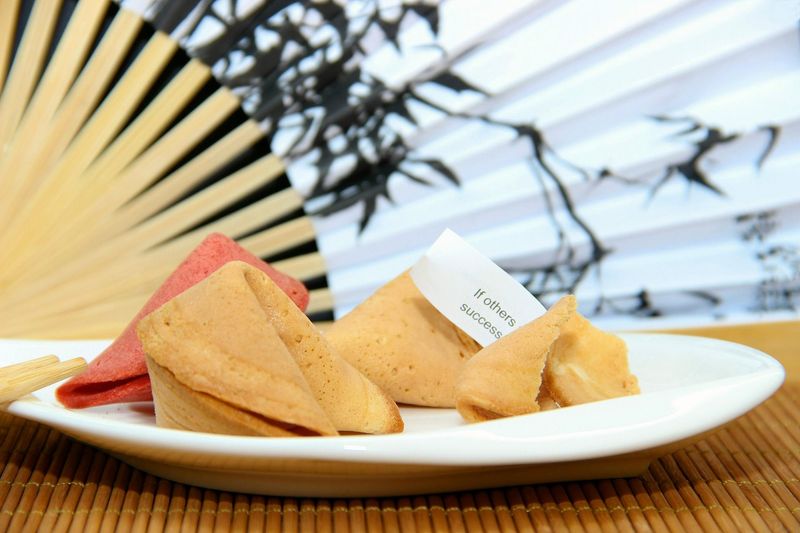
The Chinese people involved in these dishes have one common feature, and they are generally active in1862 1874(the Chinese call it “Tongzhi reviving”)Period. It was also during that period that the ancient and decadent Qing Empire was forced to open its doors and began to learn advanced science and culture from the western world. These famous figures are related to China’s “Westernization Movement” and are the vanguard role of the Chinese people in learning from the West and promoting exchanges between China and the West. This may be one of the reasons chefs named “North American Chinese food” after them.
In fact, there is no evidence that these dishes have a direct bearing on these characters. The legendary story is as follows:
In 1896, Li Hongzhang visited North America, suffering from being dissatisfied in a foreign country and losing his appetite. In order to let the official eat, the chef fried the meat and vegetables with kitchen leftovers and sweet and sour juice into a plate. Because the finished product is sour and sweet and juicy, Li Hongzhang ate this dish and could not help but have a big appetite, so he asked the entourage to include it in the daily menu.
Then, naturally, when North American locals visited Li Hongzhang, they also praised the dish. Because it is cooked with kitchen leftovers, Li Hongzhang calls it “chop suey”. So the dish was named “Li Hongzhang chop suey” and later became popular in North America as “Chinese food”.
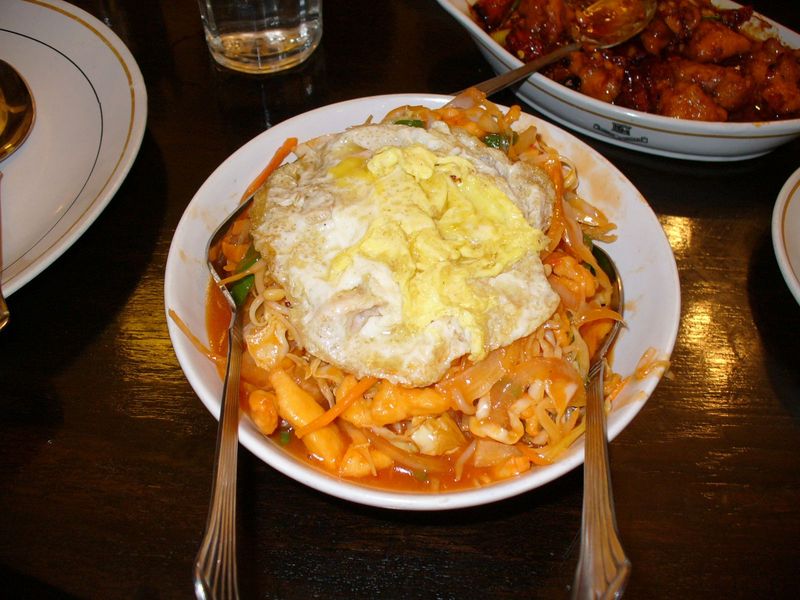
Image by Gaurav Vaidya
However, according to historical records, legends are very different from facts. As early as the second half of the 19th century, Chinese workers who went to North America to look for gold and build railways fried the “chop suey” with cheap materials. The American Chinese Museum in New York has so far retained the menu marked “fried chop suey” in Boston Hong Fa Lou Cantonese Restaurant in 1879, which is obviously much earlier than Li Hongzhang’s visit in 1896. It is obvious that after Li Hongzhang’s visit, the owner of the North American Chinese Restaurant “took advantage of the title” and made casual marketing as a celebrity. As a result, the dish name was unexpectedly successful and the name of the dish was retained to this day. It is only a pity that Li Hongzhang, a court member, had to eat “temporary patchwork materials” in the legend.
Similarly, “Zuo Zongtang Chicken” can be traced directly back to who the false “suspect” is. The dish was founded by Taiwan chef Peng Changgui in 1952 and spread to the United States in 1970. The only little relationship with Zuo Zongtang lies in the fact that Peng Changgui was born in Hunan Province and used Zuo Zongtang, a fellow-villager in Hunan when he clung to celebrities.
Have you been disappointed to see these fake dishes? But wait a minute, although the materials and practices of these dishes have little to do with China and their names have nothing to do with the Chinese celebrities involved, one thing is very Chinese: their naming logic.
In fact, China is also rich in “random fame” dishes. The more famous Braised Dongpo Pork Hock with Brown Sauce, Mao’s Braised Meat, Kongfu Wine and so on. There is no evidence to prove anything to do with Su Shi, Mao Zedong, and Confucius. Some dishes that do not cling to celebrities but cling to local dishes, such as “Chongqing Chicken Casserole”, “Hangzhou Steamed Dumplings” and “Nanjing Duck Blood Fensi Soup”, do not originate in Chongqing, Hangzhou, and Nanjing. And more names without names, place names of dishes and snacks, there will be a series of legends such as “Zhuge Liang ate and said good,” “Kublai Khan ate well”, “Zhu Yuanzhang ate well”, “Qianlong ate well”, “Cixi ate well” and so on. Obviously, most of these legends can not find any historical records, and the possibility of making up nonsense is extremely high.
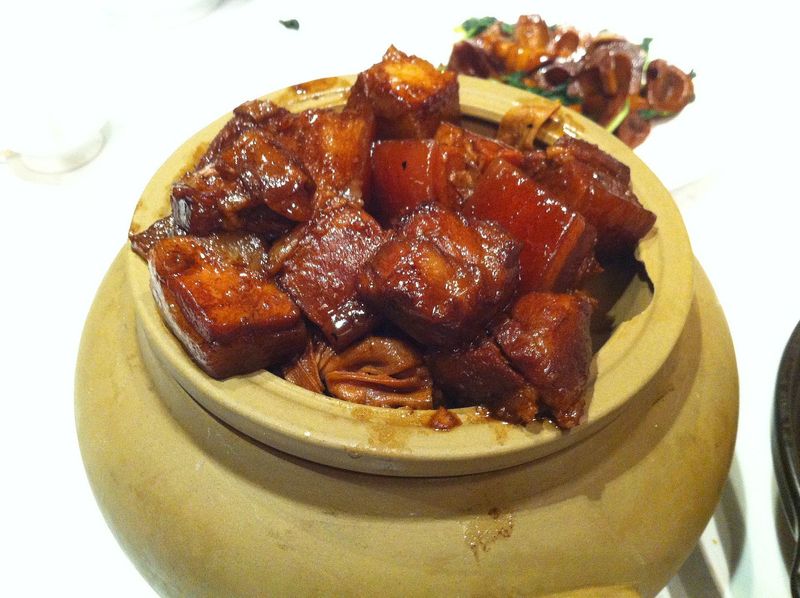
Image by N509FZ
What causes it? What is the significance of clinging to “Chongqing”, “Hangzhou” and “Nanjing”? In fact, this is because the food was founded in a small town with a low reputation, and if you name your hometown, people in big cities may not be interested. For example, “Hangzhou Steamed dumplings” actually comes from Shengzhou, but the word “Sheng” is not even known to many Chinese, it is difficult to become famous.
What is more interesting is “Nanjing duck blood Fensi soup”. Nanjing originally had duck blood soup, but addedFensiIt’s not a local way to eat in Nanjing. It’s just ducking blood soup that doesn’t spread all over the country. Duck blood.FensiAfter the soup became famous, it still borrowed the famous city sign of “Nanjing”. It can be seen that no matter where the Chinese are, they like to give the dishes a “loud name”.
American Chinese food, like Chinese food?
Unfortunately, this American Chinese food not only did not originate in China but also difficult to meet the local conditions of the average Chinese.
Let’s take a look at the common denominator of American Chinese food, and it’s easy to understand why we say that. In fact, there is a portion of real Chinese food in North America is also very popular, that is, Cantonese food “Sweet and Sour Pork”. This is a Guangdong home dish, characterized by the use of sweet and sweet vinegar cooking, sour and sweet appetizers, sometimes even added fruits such as pineapple, sweet orange, dragon fruit, litchi and so on, to further enhance its sweet and sour flavor.
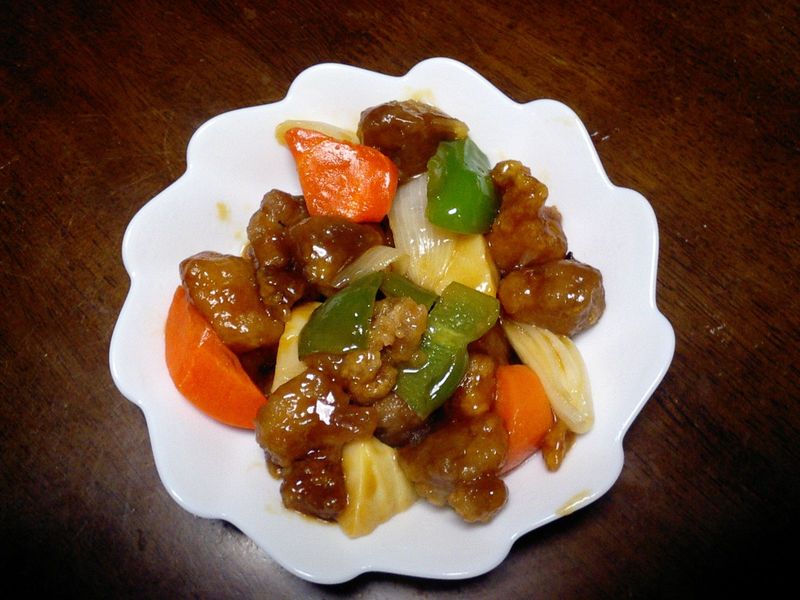
Image from wiki
However, even if this sour and sweet Sweet and Sour Pork, has been developed in North America for many years, its sweet and sour properties have been further strengthened. Today, “Sweet and Sour Pork” has been broken down by modern industry and commerce, and its sweet and sour sauces are even sold separately as a commodity in North America. And if the Chinese eat Sweet and Sour Pork, in North America, they will instantly find that Sweet and Sour Pork in North America is more sour and sweeter than their “distant relatives” in China, and most Chinese may also reject this “home food” as a result.
It is not difficult to find that “Li Hongzhang Chop Suey”, although the material is different from Sweet and Sour Pork, but the taste is also sour and sweet; “Zuo Zongtang Chicken” was founded by Hunan chef Peng Changgui, which was originally a combination of sour, sweet and spicy (spicy is a very common and important attribute of Hunan cuisine), but North American “Zuo Zongtang Chicken” can hardly find spicy taste, and sour and sweet taste is greatly aggravated.
Other Chinese dishes, such as Fortune Cookies, use baked cooking that is rarely used in China, while wonton, which is common in North America, also adds dairy products that Chinese people rarely use to cook. We can find that these dishes are closer to the local residents in taste and far from the “Chinese stomach”.
You are reading Panda!Yoo
A blog about modern Chinese culture and consumption trends. If you are interested in Chinese food, drinks, games, movies, novels, dramas, please follow us.
Join 1,565 other subscribers
So what should the “Chinese stomach” look like?
First of all, dairy products mainly came from the northern prairie in Chinese history, and those areas were usually not under the control of the ancient Chinese dynasty, so the history of eating dairy products is very short, and even most Chinese suffer from lactose intolerance at the genetic level. A dish that uses a lot of cream and cheese, probably not Chinese food.
Secondly, due to the widespread poverty in history and the lack of fuel such as firewood, the most representative way of cooking in China is to “stir-fry”. This is a method of heating food quickly, by decomposing the food into the small volume of Ding, slice, silk, strip, and block, greatly increasing the overall heating area of the ingredients, so that the food can be cooked quickly. In China, “stir-frying” actually contains the connotation of “heated oil burning and pan-frying quickly”. And also because of widespread poverty, the waste of grease is usually unacceptable, so although “deep-fry” is also a common way of cooking, the Chinese can not accept the daily eating of a large amount of oil fried food — think about how many American Chinese food is fried?
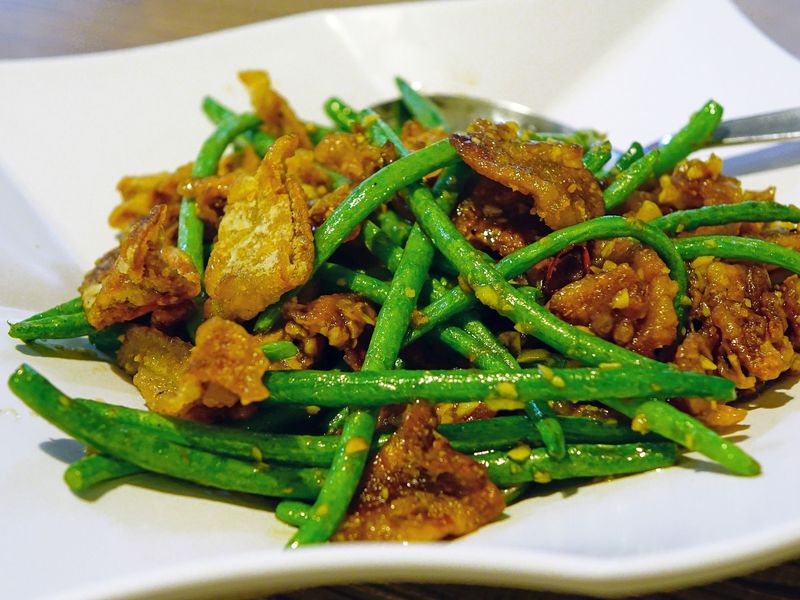
Third, Chinese food has a variety of flavors, sour and sweet among them, but sour and sweet is definitely not the representative taste of most Chinese food. Although it is difficult to generalize if we must find a relatively common “Chinese taste”, or “salty” more in line. In many health reports, Chinese salt intake exceeds the standard, which is also evidence of this problem.
If you understand this, it is not difficult to find that “Li Hongzhang chop suey” and “Zuo Zongtang Chicken”, which are commonly cooked with sour and sweet juice and fried more, are not like a portion of traditional Chinese food.
Of course, it is undeniable that there are not only a large number of Chinese immigrants in North America but also traditional Chinese settlements such as Chinatown. How can these Chinese people’s “Chinese stomach” be satisfied?. The answer is simple. There are still some Chinese restaurants offering “authentic Chinese food” in North America, but the number is relatively small, and it usually only appears in Chinese-inhabited areas.
Fortunately, as the population exchanges between China and North America become closer, some “authentic” Chinese restaurants in North America have also begun to make “second-hand preparations”, trying to make some dishes that Chinese people are used to eating, and even creating “hidden menus” to serve the real “Chinese stomach.” Perhaps, with the deepening of exchanges between China and the United States and Canada, “real” Chinese food can also be more common in North America.
These misunderstandings about Chinese food, maybe you should understand
China is a huge country with 9.6 million square kilometers of land, more than 1 billion people and 56 ethnic groups. It covers a vast area of 3 °N ~ 53 °N, 73 °E ~ 135 °E. It has complex geomorphology and various climate forms, and the natural populations vary greatly from place to place. Coupled with the national fusion factors in history, it is difficult to generalize Chinese culture with a few words, and it is also difficult to generalize China’s food culture.
Therefore, there is no concept in China called “Chinese food”. Take the popular taste of sweet and sour juice in North America, which comes from Guangdong home cuisine and can be called “Cantonese food” in China. It is worth mentioning that “Guangdong” in “Cantonese food” refers to the province of Guangdong, where the famous gourmet city Guangzhou (the Chinese say “you should eat in Guangzhou”) is located, and even in Guangdong province, Chaozhou, Shantou, and other places have very different food colors and eating habits from Guangzhou. Chinese people generally treat “Chaoshan cuisine” differently from “Cantonese food”, although Chaoshan cuisine is strictly a subset of Cantonese food-how rich China’s food culture is.
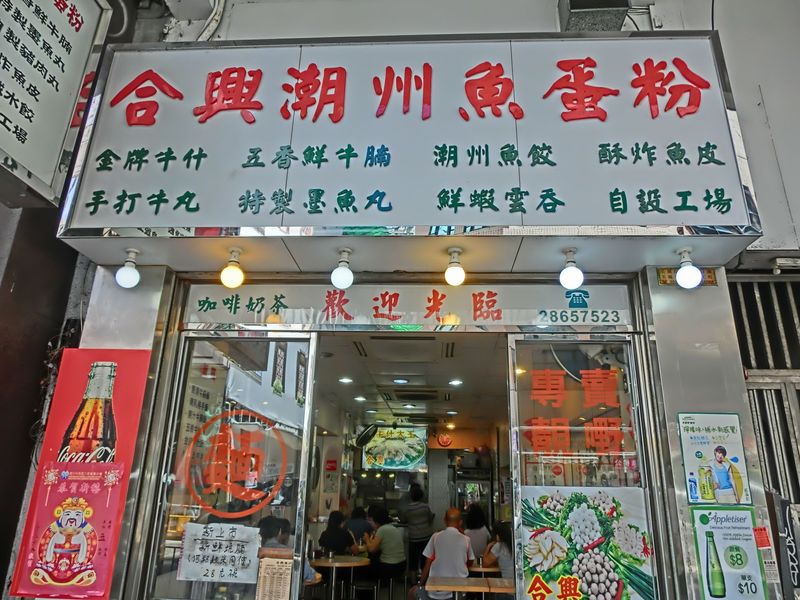
Image by ILADHSL
China’s most famous regional diet has four categories: Cantonese food, Lu cuisine, Sichuan cuisine, and Huaiyang cuisine, but even these four dishes cover only a small part of China. Other popular dishes include Hunan cuisine (Peng Changgui, inventor of “Zuo Zongtang Chicken” is a Hunan cook), Fujian cuisine, Anhui cuisine, Zhejiang cuisine and so on.
So, if someone tries to generalize the characteristics of “Chinese food”, you have to understand that it is difficult for him to generalize objectively. This is the biggest misunderstanding about Chinese food.
The second misunderstanding about Chinese food: Chinese food has a long history, there are many dishes can be traced back more than a thousand years.
There is some Chinese food that has a long history. But in terms of today’s Chinese diet, as well as the “famous” Chinese cuisine, their invention was generally later than that of the Qing Dynasty, usually only two or three hundred years old. In this regard, because a large number of species are not native to China, such as “pepper” (Hu Jiao) “carrot” (Hu Luobo) and other vegetables with the word “Hu”, it is from ethnic minorities in the northwest. Corn, tomatoes, chili and other crops native to America have to wait until after the Ming Dynasty to gradually join the Chinese menu.
Obviously, because chili peppers were introduced after the Ming Dynasty, Sichuan cuisine, Hunan cuisine and other spicy dishes have lacked this kind of ingredients for a long time in history, so it is impossible to cook dishes containing chili peppers-but this does not mean that Chinese food used to lack spicy flavor, because there are many other spicy spices in China, such as Cornus Officinalis.
But in any case, most Chinese food today is also the result of material exchange and cultural blending, not all of which are “antique”. Moreover, due to the rapid development of China’s economy in recent decades, “New Chinese food”, which has only appeared in recent decades, also accounts for a large part of today’s Chinese dinner table.
The third misconception: the Chinese eat everything.
If you take into account the vast territory of China, a large number of ethnic groups and complex and diverse social forms, this is objectively true, because the “Chinese” group is really too large. However, most Chinese people only love the food in their hometown, and their acceptability to other dishes is poor, let alone “eat everything”. Many strange wild animals, insects, cats, dogs and so on “should not eat things”, most Chinese have never eaten, and will not choose to eat.
When you travel or work or settle in China if you don’t specialize in small villages or towns, or if you don’t specifically look for small restaurants hidden in secluded corners in big cities, although you can see tens of thousands of combinations of materials and a variety of cooking methods, your chances of eating “strange materials” are very low.
At the end of the article, we stress once again the biggest misunderstanding: the Chinese do not have the concept of “Chinese food” in mind, because it really covers too many kinds of food and cooking methods. Only “American Chinese food”, which needs to be rich in regional cuisine, can be simply summed up with the word “Chinese food”-and there is no doubt that the number of American Chinese food is not as much as any mainstream “Chinese cuisine”.
- Author:NotionNext
- URL:https://pandayoo.com/2020/02/29/why-havent-the-chinese-seen-chinese-food
- Copyright:All articles in this blog, except for special statements, adopt BY-NC-SA agreement. Please indicate the source!